Episode 145: STS-70 - Flickers, Northern and New (TDRS-G deploy)
Table of Contents
On STS-70 it’s time to complete the TDRSS constellation! Or at least the first generation. We’ll also resist putting fish eggs on crackers, buy some decoy owls, and wonder why so many people from Ohio are trying to escape Earth.
Episode Audio #
Photos #
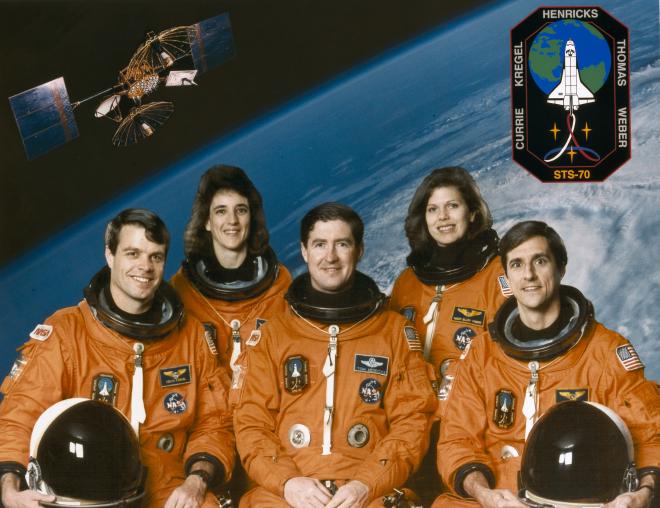
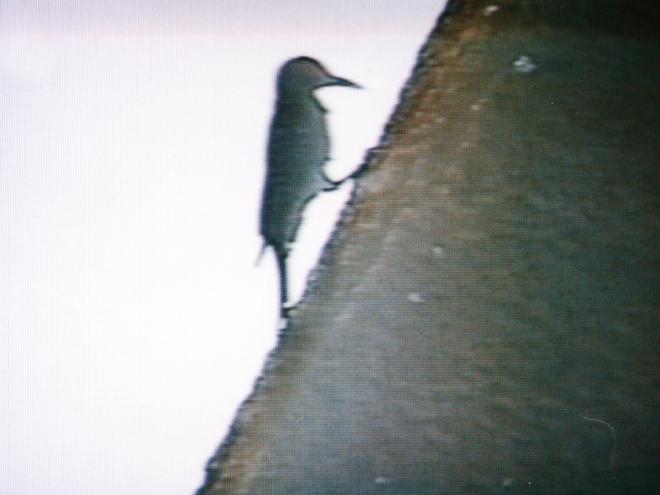
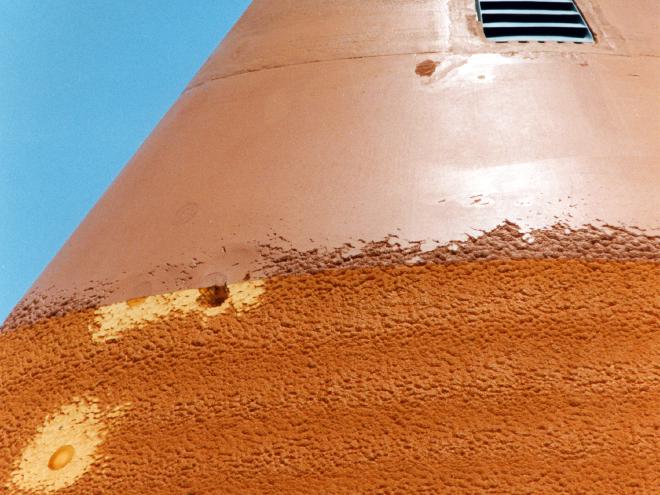
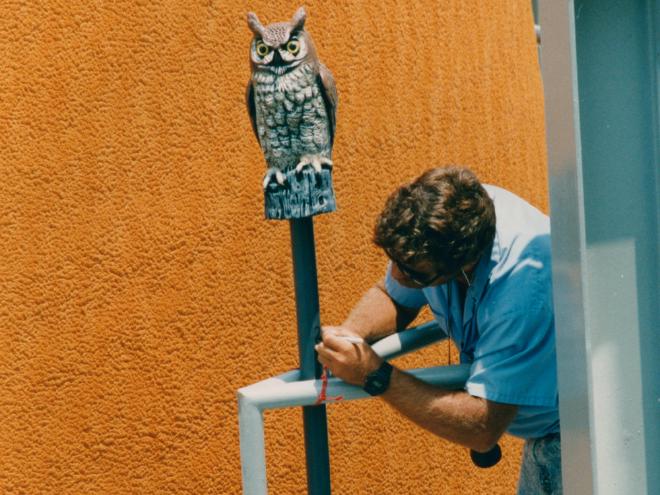
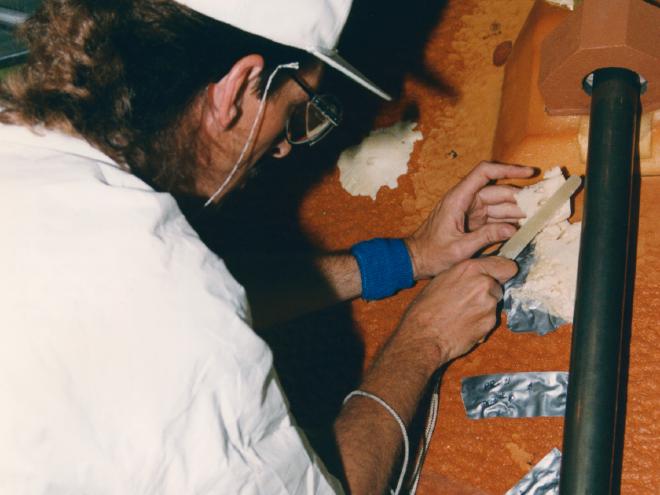
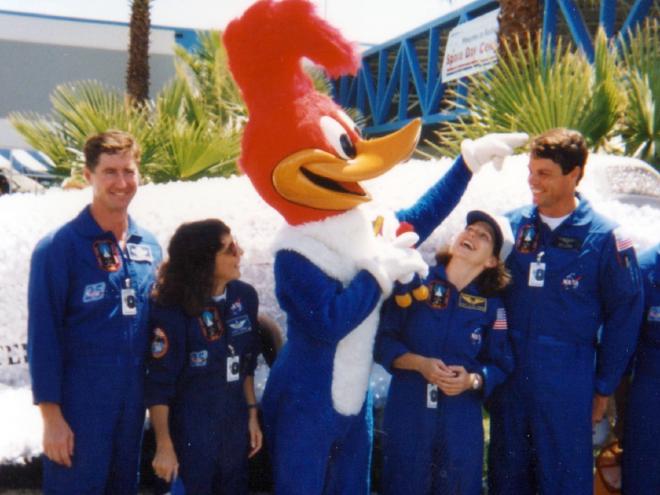
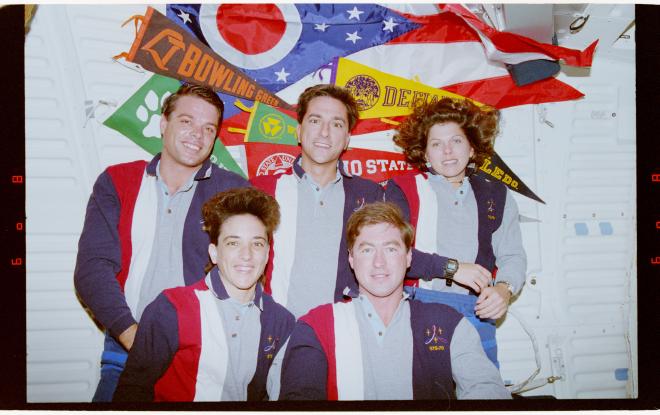
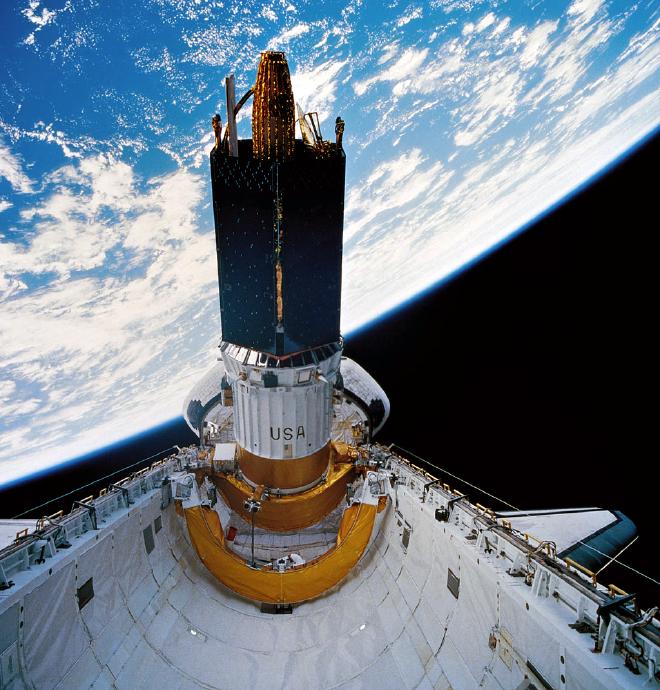
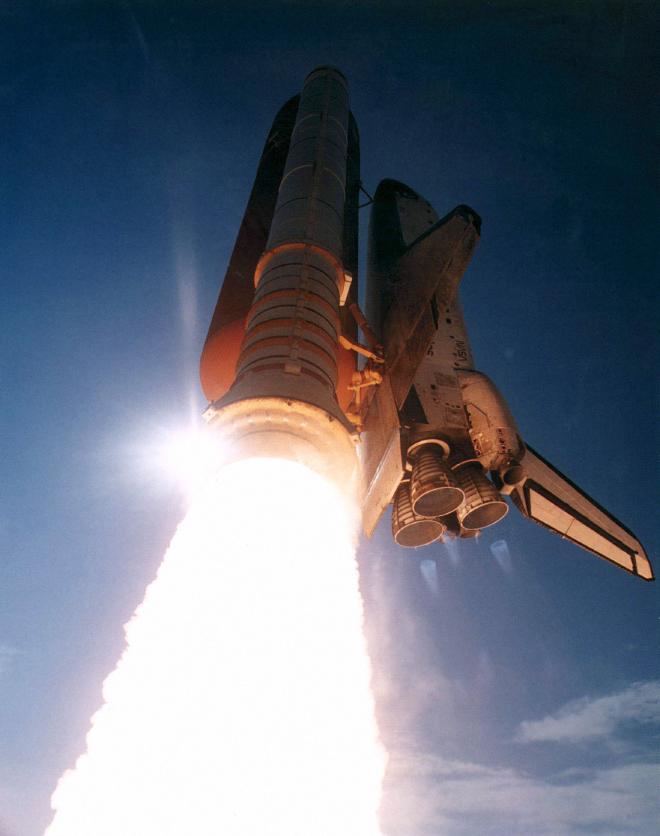
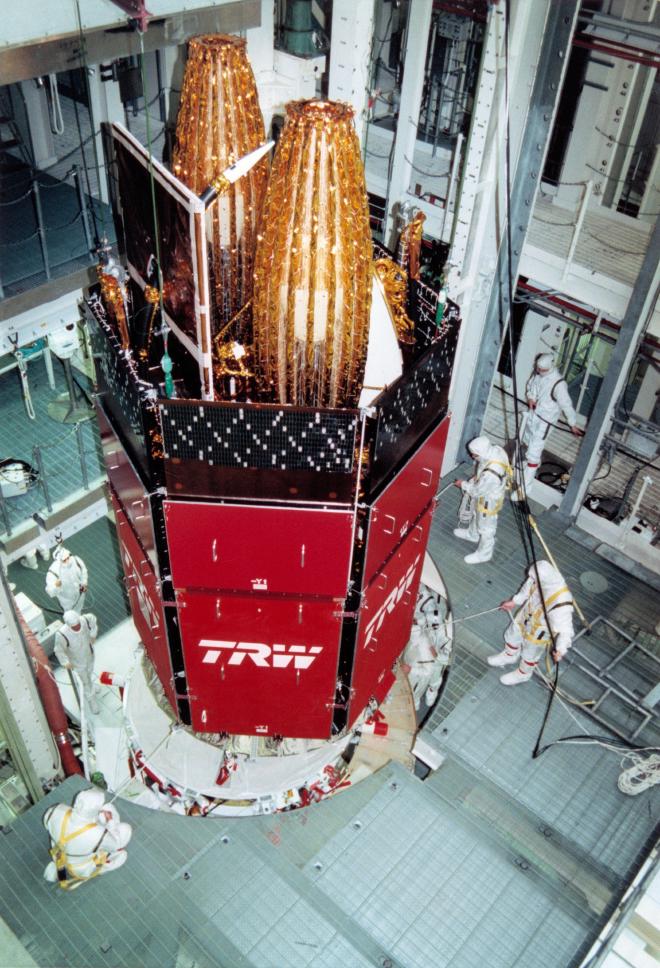
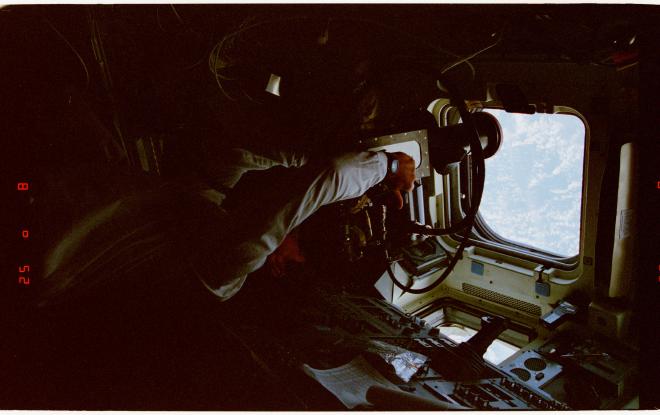
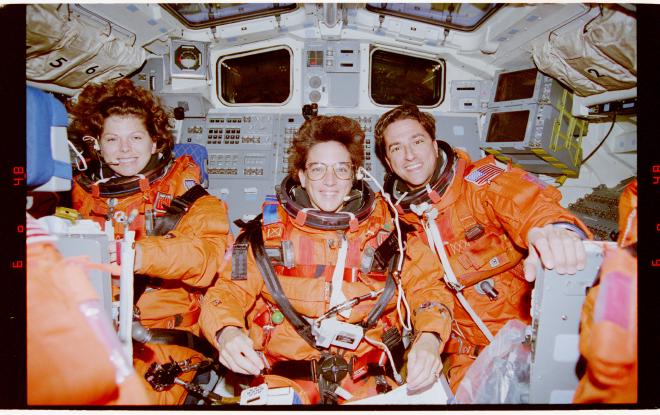
Post-Flight Presentation #
If you’d like to see the mission in motion you can check out the post-flight presentation here:
Transcript #
NOTE: This transcript was made by me just copying and pasting the script that I read to make the podcast. I often tweak the phrasing on the fly and then forget to update the script, so this is not guaranteed to align perfectly with the episode audio, but it should be pretty close. Also, since these are really only intended to be read by myself, I might use some funky punctuation to help remind myself how I want a sentence to flow, so don’t look to these as a grammar reference. If you notice any egregious transcription errors or notes to myself that I neglected to remove, feel free to let me know and I’ll fix it.
Hello, and welcome to The Space Above Us. Episode 145, Space Shuttle flight 70, STS-70: Flickers, Northern and New
Last time, we covered the 115 days that Norm Thagard spent working alongside his Russian colleges on Mir. We learned a little bit about the structure of Mir, what day to day life was like on the station, why diet experiments can be dangerous, why we shouldn’t trust rubber bands, and what’s in the Russian juice bottles. This first long term collaboration between the United States and Russia’s humans spaceflight programs ushered in a new era of cooperation in space, while also delighting us with some pretty wild anecdotes. And I didn’t even talk about the more er, “adult” VHS tapes. Clearly, we’re going to have a fun and interesting time learning about Mir in the missions to come.
For now, though, we’ll return from long duration space stations and get back to our favorite big white spaceplane. But before we start, it’s time for one of my favorite little additions to the podcast: arbitrary milestones. And even more appropriate, arbitrary milestones that actually passed a couple episodes ago because I forgot. When I was reading Ben Evans’ book “The Twentieth Century in Space” while researching this episode, he mentioned something that caught me off guard. But I double checked, and sure enough, Ben was right. It turns out that a few episodes ago, with the flight of STS-67 carrying the ASTRO-2 payload, we passed the halfway point in the space shuttle program. That flight was the 68th of 135 space shuttle missions, which most scientists would agree is just past 50%. Kind of amazing how time flies. Well, if time is going to keep slipping like a bunch of unruly chronitons, we better get on with this flight. This is actually going to be one of those missions where I leave the payload as a mystery until we arrive on orbit, so let’s just jump right in and meet the crew.
Commanding the flight was Tom Henricks, who we last saw flying as Pilot on STS-55, the German-funded D-2 Spacelab mission. Henricks is moving over to the seat on the left, on this, his third of four flights.
Joining Henricks up front is today’s pilot and the first of our two rookie crew members: Kevin Kregel. Kevin Kregel was born on September 16th, 1956 and grew up in Amityville, New York. Kregel was one of many children growing up in the 1960s who become inspired by the space race and decided they wanted to become an astronaut. With that in mind, he attended the US Air Force Academy and learned how to fly at Williams Air Force Base in Arizona. He spent several years with our allies across the Atlantic, flying the F111 with the Royal Air Force in the UK. When he got back to the US, he graduated from test pilot school, and went on to test the weapons and electronic systems of the F111 and F15 fighter jets. He joined NASA in 1990 as an aerospace engineer and instructor pilot, testing out T38 upgrades and instructing future shuttle pilots in the Shuttle Training Aircraft. Two years later he was selected as an astronaut and this is his first of four flights.
Moving on to the mission specialists, we find Mission Specialist 1 Don Thomas. We actually saw Thomas not too long ago, flying on STS-65, the International Microgravity Laboratory. Maybe it was the inspirational power of Bob Cabana’s superhero alter-ego IML-Man that got Thomas back on a mission so quickly. In any case, this is his second of four flights. One thing I want to quickly mention is that Thomas actually wrote a book that focuses on this mission, called Orbit of Discovery. I wasn’t able to read as much as I had hoped, but I bring it up because for the third time, I ordered a used space book online and it showed up with astronaut autographs in it. Previous examples include a copy of Countdown signed by Frank Borman, and a Smithsonian book that’s signed by a bunch of shuttle astronauts including Charlie Walker, Rick Hauck, Tom Jones, and more. I mentioned this to a friend who decided to check his unread space books.. and discovered a few autographs of his own! Including Jim Lovell! Moral of the story: buy used space books, and check them!
Flying as our flight engineer on today’s flight is Mission Specialist 2, Nancy Currie-Gregg. Currie-Gregg is another familiar face, since we saw her on STS-57, which, among other things, retrieved the European science satellite EURECA. This is her second of four flights.
And rounding out the crew we have Mission Specialist 3, Mary Weber. Mary Weber was born in 1962 in Cleveland, Ohio, and grew up in nearby Bedford Heights, Ohio. Weber graduated from the astronaut factory known as Purdue University, wielding a Bachelor’s Degree in Chemical Engineering. She then moved out to the University of California at Berkeley and earned a PhD in Physical Chemistry. Weber apparently had a taste for weightlessness even before becoming an astronaut, since she is an avid skydiver. As of March of 2018 she has logged nearly 5,000 skydives and has earned numerous medals in the US National Skydiving Championships. When she wasn’t exploring the physics of gas-phase chemical reactions, researching new processes for making computer chips, or jumping out of airplanes, Weber applied to become an astronaut, with NASA selecting her in 1992. This is her first of two flights.
If you were paying an unreasonable and almost scary amount of attention, you might have noticed something interesting about our crew. Commander Henricks was born in Bryan, Ohio and grew up in Woodville, Ohio. Mission Specialist Thomas was born in Cleveland, Ohio. Mission Specialist Currie-Gregg was born in Wilmington, Delaware but grew up in Troy, Ohio. And Mission Specialist Weber was also born in Cleveland, Ohio, growing up nearby in Bedford Heights. So that’s four astronauts out of our five person crew that were born and/or raised in Ohio. It appears to be just a coincidence that they were all assigned to this flight, and I guess it was bound to happen sooner or later. There must be something about Ohio that makes people want to leave the planet, since this crew includes just the latest in a long line of Ohio-based astronauts. John Glenn, Jim Lovell, Neil Armstrong, and Judy Resnik, among others, also call the Buckeye State home.
If it wasn’t for that pesky pilot Kregel being from New York, NASA would have its first all-Ohio spaceflight since John Glenn flew alone in 1962. Not to be deterred, the crew wrote to the governor of Ohio and explained the predicament. And that’s why, on May 4th, 1995, Governor George Voinovich declared Kevin Kregel to be an honorary Ohioan, quote “thus extending to him all rights and privileges held dear by all citizens of our state.” end-quote. This immediately made me wonder if Kregel gets benefits like paying in-state tuition for Ohio colleges but I guess that’s besides the point. With the help of Governor Voinovich, STS-70 was now an all-Ohio crew, so that’s fun.
What was less fun was what the crew discovered mere days before their scheduled June 8th liftoff date. There was a problem with the External Tank. It’s sort of easy to forget about the External Tank since its job seems so straightforward compared to the raw power coming from the SRBs, the clean efficiency of the shuttle main engines, or the overwhelming complexity of the orbiter. But the ET is not to be underestimated. While its role in the mission is simple, the actual execution of that role is pretty tricky. As we discussed way back in the introduction to the space shuttle, the ET is composed of two gigantic tanks, a series of pipes and valves, and various vents and access hatches. And if you think I forgot that way back on on episode 64 I promised to talk about the ET anti-geyser line for some reason, don’t worry, it’s still on the list. But the reason I’m drawing attention to the ET today is because of its most visually obvious feature: the orange insulation foam that covers the vast structure.
The External Tank carries liquid hydrogen and liquid oxygen, both of which are stored at incredibly cold temperatures. That’s a problem because if they were to just leave the aluminum skin of the ET bare, when they filled it with cryogenic propellant the skin would get super crazy cold. And just like a cold soda can on a humid day, it would gather condensation. But since the skin is a whole lot colder than soda, the condensation would then freeze, forming giant sheets of ice. When it was time to lift off, all of that ice would fall off and be a potential hazard to anything in its way. We saw this back on the Saturn V and it was actually pretty cool. But the Saturn V didn’t have a lot of super sensitive stuff lower down on the rocket, so it was able to just sort of shrug at this cascade of falling ice. In the case of the shuttle, we’ve got a sprawling and delicate thermal protection system nestled right up alongside the external tank, so falling ice was no good. To solve the problem, the entire tank is covered in insulating foam, which ranges in thickness but is typically about two and a half centimeters, or one inch, thick. For the first two shuttle flights, the tank was painted white, but it was quickly realized that this wasn’t necessary and that NASA could carry a little more cargo if they just left the foam its natural color: a dark brownish orange.
Now.. with that background, let’s get back to the days before the scheduled launch. In a definitely completely unrelated development, the local wildlife had noticed something amazing. There was a mysterious and gigantic tree! It was eight and a half meters across and stood 47 meters above the ground. That was way way bigger than all the other trees. Plus, it’s so soft! Well, there’s something really hard about an inch inside the surface, but that’s no problem. I’m sure there’s a good spot somewhere, it’ll just take a little effort to find it. This is perfect. .. at least.. that was the apparent thought process of the local population of Northern Flickers. Woodpeckers. Yes, woodpeckers, the birds known for digging large holes in trees. I’m not sure why it took us 70 missions for this to happen, but woodpeckers had descended on the External Tank, done their thing, and left 71 holes all over the protective layer of insulating foam. To stop additional attacks, several plastic decoy owls as well as balloons that look like the eyes of the birds’ predators were set up around the pad to deter the flying vandals, leading to the hilarious juxtaposition of an ultra-advanced spacecraft right next to a bunch of dumb plastic owls. Workers spent a couple of days attempting to repair the damage out at the pad but there was just no safe way to reach some of the damage. Instead, they gave up and rolled Space Shuttle Discovery back to the Vehicle Assembly Building. This was especially a bummer because it meant that STS-70 would lose its place in line and STS-71 would jump ahead, delaying the mission even more. As Thomas laments in his book, this also meant that STS-71 stole the “100th NASA human spaceflight” record, which he thought was unfair since STS-71 already had a lot of notable milestones. Ah well, the hazards of living near woodpeckers, I suppose.
But after a trip to the VAB and back, with a freshly patched External Tank, Discovery was ready to try again on July 13th, 1995.
But first, let’s take another quick detour. That’s right, it’s time for yet another check-in with our favorite wandering spacecraft: Galileo. As you are all now very well aware, the Galileo spacecraft was deployed on STS-34, way back in 1989. We’ve occasionally turned our attention away from the rapid-fire shuttle flights to sample the more plodding pace of an interplanetary mission. Well, we only have one more milestone left before we finally arrive at Jupiter. It’s time to deploy the Jupiter Atmospheric Probe.
On July 13th, 1995 at 6:07 AM Greenwich Mean Time, with five months of travel left until arriving at the gas giant planet, Galileo and the atmospheric probe parted ways. If there was any doubt, it was confirmed by the tiny blip in Galileo’s radio signal, caused by the spacecraft’s tiny change in velocity due to the equal and opposite reaction of deploying the probe. In five months time, the probe would enter the upper atmosphere of Jupiter at a staggering 171,000 kilometers per hour, making every atmospheric entry we’ve seen so far look like child’s play. But for now, we’ve got another five months to wait, so we’ll return our attention to Earth.
At the time that Galileo was deploying the Jupiter Atmospheric Probe, the crew of STS-70 had probably just been woken up. That’s because July 13th, 1995 also happened to be their launch day. The crew went through the usual routine of suiting up, riding out to the pad in the astrovan, perhaps giving a polite nod to the plastic owls, and then climbing aboard their spacecraft. The countdown went perfectly smoothly with the exception of one minor hiccup. Right near the end of the countdown, the signal coming from the flight termination system on the external tank dipped a little below allowable limits. Of course, any scenario that resulted in the use of the flight termination system, aka “small bomb”, would be a nightmare, but it was important that it worked, so the launch was held up. Thankfully, it only resulted in a 55 second delay, and at 9:41 AM, and 55 seconds, Space Shuttle Discovery lifted off for the 21st time.
To the outside observer, the uneventful ascent would look like any other, but there was actually a pretty notable difference with this launch. As we know, at the back of the orbiter are the three space shuttle main engines, or SSMEs. The SSMEs aren’t as flashy as the solid rocket boosters, but they provide the bulk of the acceleration required to reach orbital velocity, burning all the way from 6 seconds before liftoff right through orbital insertion. The SSMEs are pretty incredible works of engineering, with thousands of parts moving with extreme precision in extreme environments and providing extreme thrust with extreme efficiency. Dusty would love it. The engines are also one of the reasons a shuttle launch takes so much work to prepare. With so many moving parts and so little room for error, the engines were extensively inspected after every flight. Any tiny crack, any little leak, or any corroded weld was a chance for a catastrophic failure. And let’s not forget, while we know that the two accidents that resulted in the loss of crew and vehicle of the space shuttle were caused by the Solid Rocket Boosters and the External Tank, the prevailing concern at the time was that something would let loose in an SSME, and that would be the main source of potential disaster. So with all of that in mind, the SSMEs were getting an upgrade.
The center engine on STS-70 was one of these new Block 1 designs, and it was flying for the first time. Among other features, the Block 1 engine contained a new oxidizer turbopump that reduced its number of welds from 300.. down to six. It had a new two-duct powerhead, as opposed to the current design’s three, which both improved fluid flow and reduced pressures, which in turn reduced the loads on the engine. It also had a new single-coil heat exchanger that had no welds, down from seven in the previous design. If you’re not sure what a powerhead is or why a single-coil heat exchanger is good.. well, I’m right there with you. But the important thing is that the new design was simpler, required fewer inspections, and, most importantly, was safer.
Confidence in the engine was high, thanks to the extensive testing program on the ground. Before it was ever attached to Discovery, the new design had been fired for the equivalent of 40 shuttle launches. Despite that, I’m sure there were some sighs of relief from the propulsion team when all three engines shut down after a flawless ascent.
Once safely on orbit and separated from the external tank, the usual scramble of activity began. Photos were snapped of the External Tank to confirm that the woodpecker repairs had held up as expected, so there was no concern about major impacts to the heat shield. That meant that attention could turn to the imminent deploy of the mission’s primary payload: TDRS-G.
We’ve become pretty familiar with these deploys over the years. TDRSS, of course, is the Tracking and Data Relay Satellite System, with each spacecraft also being called TDRS, but with one fewer S, since it’s a Tracking and Data Relay Satellite. With TDRS-G we’ll be going through a deploy for the sixth time. But with this flight, we’ll see the last of the first generation TDRS satellites. With that in mind, I thought we’d do a quick retrospective on the system, and see how we got to where we are in this point of the story.
We first saw a TDRS launch way back before the mission numbers got all wacky, on only the second operational shuttle flight, STS-6 in 1983. The actual deployment from the shuttle went perfectly smoothly, but the Inertial Upper Stage that was supposed to carry TDRS-A to orbit malfunctioned. So instead of a nice easy cruise on up to GEO, the team at the Goddard Space Flight Center had to spend months carefully coordinating dozens of maneuvers with the spacecraft’s smaller engines. The satellite made it in the end, and was renamed TDRS-1 once it was operational, but there was a lot more drama than expected.
The next TDRS launch wouldn’t take place for several years, since the IUS problems needed to be ironed out. It had actually been scheduled to launch on a couple different missions before it finally landed on the one that would usher it off of the launchpad: STS-51L. Yes, while the Challenger Accident is primarily remembered for the tragic loss of the crew and vehicle, including Payload Specialist and Teacher in Space Christa McAuliffe, its primary objective was to deploy TDRS-B. Of course, TDRS-B was lost in the skies over Florida on that cold January day in 1986, and the TDRSS program suffered another setback.
Underscoring the importance of this space-based communications network, TDRS-C would launch on the very next mission: STS-26. The successful 1988 launch of Discovery marked the return to flight of the space shuttle, but also the second successful deployment of a TDRS satellite. This time, the IUS worked as expected and TDRS-C became TDRS-3.
Just a few flights later, in 1989, Discovery did it again on STS-29, delivering TDRS-D to low earth orbit. After a successful deploy, TDRS-D rode its upper stage up to geostationary orbit and TDRS-4 joined the network.
After that, we see a steady rhythm of a new TDRS launch every two years. In 1991, TDRS-E flew on Atlantis, and in 1993, TDRS-F flew on Endeavour, adding TDRS-5 and TDRS 6 once each spacecraft became operational. And today, in 1995, we meet TDRS-G.
TDRS-G was originally never supposed to happen. At least, not as part of the first generation of satellites. But as part of the aftermath of the Challenger accident (yes, we’re still feeling echoes from that even nine years later) funding was allocated for a replacement for TDRS-B. This is fortunate, because it turns out that without TDRS-G, the constellation wouldn’t have been able to meet its full requirements.
If you’re going to switch from a series of ground stations to a constellation of geostationary communications satellites, you kind of have to go all-in. Entire missions were being crafted with the use of TDRSS at the heart of the concept of operations. Also, lingo of the day, at Goddard at least, we say “conops” for “concept of operations”. Basically, how we’re gonna do what we do. Anyway, we’ve got a bunch of stuff with a conops that critically depended on TDRSS. In addition to the space shuttle, we’ve got the Hubble Space Telescope, UARS, ERBS, the Compton Gamma Ray Observatory, among others, all counting on TDRSS for data downlink. In the case of Compton, which had a faulty data recorder, TDRSS was basically the only way for it to generate scientific data at all. And then you can add in the upcoming International Space Station, and the Earth Observation System including Terra, Aqua, and Aura. My point is, if NASA was going to use TDRSS at all, it had to work all the time.
Really, you only need two satellites to make the system work: TDRS-East and TDRS-West. Yes, you miss a little gap over the Indian Ocean, but you can work around that in ops. But with this “gotta work” requirement, NASA also needed two fully functional spares that were ready to jump in with little warning if there was a problem. If we refer back to our list above we find that we have three fully functional spacecraft: TDRS-4, -5, and -6, and two partially functional ones: TDRS-1 and -3. So the addition of TDRS-G, which would become TDRS-7, would mean NASA had four fully functional satellites ready to go: two primary, and two backups, along with two more spares that weren’t fully functional but were better than nothing.
Since TDRS-G would be a spare, you might think that there might not be a huge urgency to get it into orbit. After all, it would immediately be put into a sort of space-based storage mode. But here’s the hilarious thing.. it was actually cheaper to store it in space than it was to store it on the ground. If they kept it on the ground, they’d need to occupy a cleanroom, which are expensive to operate and there are only so many to go around. Plus, you’d also need to make sure you kept staff on hand who know all about the care and feeding of a newly launched TDRS. If anyone left for another mission or retired, you’d have to spend the resources to train someone new and keep that institutional knowledge. But once TDRS-G was in space, you just add it to the small fleet that the TDRS operations team was already keeping an eye on. That’s not exactly cheap either, but keeping an eye on six satellites isn’t a whole lot different than keeping an eye on five. Plus, the cost of the launch would have to be paid at some point no matter when it happened. You either pay for it now or pay for it later, so it wasn’t a factor. So there you go. It’s not every day that the cheaper option is to send something into space, but here we are..
I mentioned that this was the last TDRS of the first generation, but something I left out is that the next generation wouldn’t be coming for a few years, aaaand would be launching on expendable launch vehicles. So this will be the last ever TDRS deploy from a space shuttle! Let’s send it on its way in style.
Once Discovery reached orbit, the crew scrambled into action. Don Thomas and Mary Weber would be leading the deploy effort, with Thomas focusing on the actual switches and Weber focusing on watching the displays and situational awareness, but the whole crew would be involved. After an hour and a half, the payload bay doors were opened. Next, the whole IUS and TDRS stack was tilted up 29 degrees. This was enough for it to peek over the edge of the payload bay, and allow crews on the ground to connect directly to the spacecraft and confirm that it was working. When those tests went well, the crew next cut the umbilical cables between the TDRS and orbiter and tilted the stack up to 58 degrees. At this angle, when TDRS was sent on its way, it would sail clear over the crew cabin at the front of the orbiter.
6 hours and 13 minutes into the mission, exactly on time, the connections between TDRS-G and its cradle in the payload bay were severed, and springs gently pushed the stack away at a leisurely 10 centimeters per second. About a minute later, the pilot crew performed a seven second burn using forward-facing RCS jets in Discovery’s nose, and increased the separation between TDRS-G and the orbiter. About 14 minutes after that, they commanded a much larger 33 second burn using the left OMS engine, imparting 9.2 meters per second of delta V to Discovery. This put even more distance between the two spacecraft. The final step was to turn the belly of the orbiter towards TDRS before it fired the first of its two solid propellant stages. The goal wasn’t to use the fragile heat shield to protect against debris, but rather against contamination from the rocket plume. The distancing maneuver worked perfectly, as did the two stages, delivering TDRS-G to its geostationary slot and allowing it to take on its operational name: TDRS-7. As of 2021, TDRS-7 is still in operation supporting NASA’s fleet of Earth-orbiting spacecraft.
After the deployment, we meet the second FCR from the episode title. The first, of course, refers to the Northern Flicker, the species of woodpecker that gave NASA a headache when they attacked the External Tank. The second FCR is actually an acronym, spelled F-C-R and stands for Flight Control Room. The newly built White FCR was a state-of-the-art mission control center that would be controlling the entire STS-70 mission other than launch, TDRS deploy, and landing. Gone were the days of massive dumb terminals, relaying images from TV cameras pointed at physical display overlays somewhere in the bowels of the Johnson Space Center. The White FCR sported high-speed computers, hundreds of miles of fiber optic cables, and a splash of various big displays at the front of the room. If you’ve ever seen modern footage of space shuttle mission control, you’ve probably seen the White FCR. It’s just one of these little details that can fade into the background, especially when compared to the spectacle of humans in space. But those humans wouldn’t be able to safely live and work in space without the army of technicians and engineers on the ground keeping an eye on them. So just like how the new SSME upgrades would makes things cheaper and safer, so would this new control room.
So with the TDRS deploy done, control of the mission was switched down the hall to the new FCR for its first real mission. And only seven hours after lifting off, the primary objective of STS-70 was complete. But since we already took all the trouble of getting ourselves up here, we might as well do some really cool science, don’t you think?
As always, the middeck was swimming in various little experiments. Some required no crew intervention at all, like some plants that were placed in middeck lockers so that their cellular structure could be studied later. By scrutinizing how they developed, clues about the roles of gravity and radiation in cellular growth could be discerned.
Some more active biological experiments included a vision test and some fish eggs. The vision test saw two crew members performing daily evaluations of their vision, with the hope being that they could catch any changes in the act. For decades astronauts had reported slight changes to their vision during spaceflights, but the mechanism for these changes were still not well understood. And while it seemed to be more of a nuisance than a major issue, it was important to figure out what was going on. What if some circumstances would lead to the commander’s eyes changing so much that they couldn’t land the orbiter? What if it the changes turned out to be permanent? Or what if the vision changes were just a symptom of a more concerning problem? These tests were the latest in an attempt to figure out what was going on.
The fish eggs I mentioned were actually somewhat familiar to us too. Remember the Medaka fish that flew on STS-47, the Japanese Spacelab mission? Well now they’re back, in egg form! Apparently the Medaka eggs were pretty well understood and were useful as a model for biological processes. So by taking this well-understood system and turning the gravity knob down to zero, scientists would be able to learn a whole bunch more about embryogenesis, the process of embryo development. Just don’t spread them on a cracker.
A number of Department of Defense experiments were also making a comeback on this flight with a few tweaks. Among them was an upgraded version of the HERCULES camera, which was able to pinpoint where what parts of the Earth appeared in photos from space. Among other things, the new system was multi-spectral, allowing measurements outside of the visible light spectrum. So this was getting to be one fancy camera. The Military Applications of Ship Tracking, or MAST experiment also made a return. In this, astronauts would take observations of clouds near large sea vessels. The thought was that the pollution coming off of these ships would actually change the nature of the clouds near them, causing them to reflect light differently. This had obvious applications for the military in tracking ships, but it was also important to know how these pollution aerosols were changing the local weather and climate.
And of course, no shuttle flight would be complete without some sort of protein crystal growth experiment. There’s always some sort of protein crystal growth experiment.
The mission continued on with no significant issues. To give you an idea of just how calm this flight was, one of the biggest issues I saw was that the onboard vacuum cleaner tripped a circuit breaker. Upon inspection, they realized that the power cord had become frayed when it was closed in a middeck locker door and was now causing a short circuit. The crew actually made the effort to splice in a repair for the power cord, but the decision was made to leave the vacuum stowed just in case.
So with TDRS deployed, Medaka eggs inspected, ships observed, eyeballs squinted, and vacuum cleaners repaired, it was time to come home. Well, almost. The crew got one extra day and one extra rev on orbit courtesy of the Florida weather, but the fourth time was the charm, and Discovery soared through an uneventful reentry. After touching down at the Kennedy Space Center and rolling to a stop, the 8 day, 22 hour, 20 minute, and 7 second mission was over. The mission report called it the most trouble-free flight of the entire shuttle program to date. Maybe we should send Ohioans into space more often!
Next time.. no, it’s not a UFO, no, it’s not a cyberdisc, and no, it’s not the world’s most expensive pog.. it’s the return of the Wake Shield Facility! Time to create a little ultra-vacuum.
Ad Astra, catch you on the next pass
